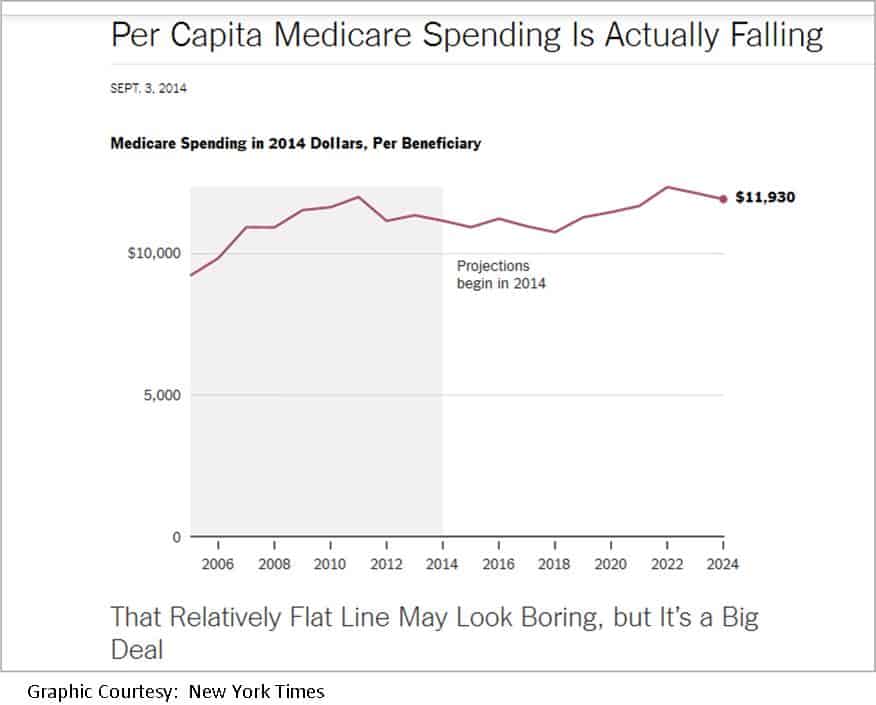 While a flat line in the medical world is usually bad news…when it comes to health care costs in Medicare, this flat line is a good thing. We reported earlier on the latest Congressional Budget Office forecast for Medicare and why that news is being ignored by Washington’s well-financed anti-entitlement lobby and the fiscal hawks they support in Congress.
While a flat line in the medical world is usually bad news…when it comes to health care costs in Medicare, this flat line is a good thing. We reported earlier on the latest Congressional Budget Office forecast for Medicare and why that news is being ignored by Washington’s well-financed anti-entitlement lobby and the fiscal hawks they support in Congress.
Today, the New York Times provides even more good news for Medicare and bad news for anti-Social Security and Medicare scolds:
“Medicare spending isn’t just lower than experts predicted a few years ago. On a per-person basis, Medicare spending is actually falling.
If the pattern continues, as the Congressional Budget Office forecasts, it will be a rarity in the Medicare program’s history. Spending per Medicare patient has almost always grown more rapidly than the economy as a whole, often by a wide margin.”

For years now, Wall Street funded fiscal hawk groups have been promising fiscal Armageddon unless Congress immediately cut benefits to middle-class seniors and their families. Contrary to that billionaire-financed bluster, the truth is there are clearly ways to see savings in Medicare through lower health care costs, not just by slashing benefits:
“The recent pattern reflects two main factors. One is that the baby boom generation is entering the program. In the long term, that’s a problem for Medicare’s finances because the number of people it must care for is going to surge. But in the short term, it skews the group enrolled in Medicare toward a younger, healthier population.
The second factor is more surprising and consequential. Over the last few years, Medicare patients have been using fewer expensive medical services, particularly hospital care and prescription drugs. The budget office is increasingly persuaded that such a pattern is going to last for a while.”
And there are even more proposals that could be enacted which don’t single out seniors for benefits cuts. How about allowing Medicare to negotiate for lower drug costs like the VA does for veterans? Or fully allow the proposed reductions in billions of dollars in federal overpayments to MA private insurance companies to be enacted, as proposed by the Affordable Care Act? This CBO report clearly proves there are ways to manage costs beyond the benefit-cutting or privatization schemes preferred by Congress’ self-proclaimed deficit hawks:
Joan McCarter at Daily Kos sums it up best this way:
“Here’s what’s particularly significant in this: “Reductions made in the last four years alone are responsible for 10-year savings of more than $715 billion, which dwarfs nearly every deficit-reduction measure currently under discussion.” Take that, Paul Ryan.
Here’s the thing. Medicare is going to be facing issues when the baby boom cohort gets older and sicker. But this trend in shrinking costs gives policymakers time to look at reforms that do not require benefit cuts, that don’t require pain for Medicare patients. That means there’s no reason for another Paul Ryan budget that slashes the safety net or for another catfood commission calling for raising the Medicare eligibility age or more cost-sharing by patients. Take note, Democrats, and stop with the deficit fetish already.”


